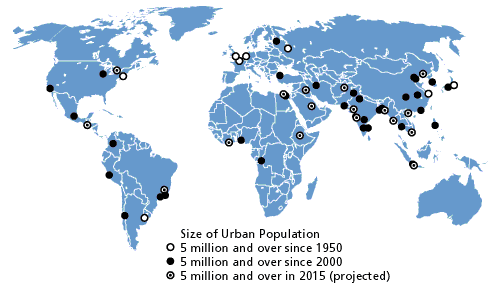The Day After Tomorrow?
Historically megacities with the spread and population matching that of Delhi or Mumbai has been a very 20th Century phenomenon, mainly built by migrants. Until then the most stable human settlements have been agrarian villages, which were primary producers of agricultural products that took care of food, clothing, and locally produced tools and crafts. House or road contractions were community activities. Local trade in surplus or value added products were supported by trading centres that allowed for some exchange of goods and services. These were self sufficient administrative centres that served the neighbourhood villages.

It is now predicted that by 2020, 60% of the world’s population will be living in cities. In a situation like this ever thought if something like the ‘The Day After Tomorrow’ movie happens to our city of Delhi. For those not familiar with its story line, it is about what the world would look like if the greenhouse effect and global warming continued at such levels that they result in worldwide catastrophe and disaster, including multiple hurricanes, tornadoes, tidal waves, floods and the beginning of the next Ice Age. If we need to give up our cities and go away, what roots will we trace? What connections will we use to go back to?
The easiest answer is given by geography, ‘go back to States we came from’. But it is not so easy. Using the geographic connection to the states we come from may not be feasible or practical. We can at best trace our place of origin back to three generations. It is often quoted jokingly that if all the Malyalis decide to go back to Kerala there may not be any space left for people to stand in the state.
Besides some of us may have come from other large cities, then where do we go? This is very constraining.
Another option to trace our roots is ethnicity and cultural heritage. We can explore commonness of language, dialect, religion, sect, caste, creed, lineages, eating habits, values and beliefs, inheritances, wealth accumulation patterns, knowledge creating practices, you name it. This way of establishing our identities provides us with a very wide variety of options to choose from. Then we can choose to identify ourselves with an option or not, and take full responsibility for the choice we make, and enrol the people already to there, to accept us to live with them. This would avoid tensions and strive between the new comers and original settlers.
I do not know how these choices of ethnic identities, are made by individuals. Nor do I know whether these ethnic identities are fixed over time or are context specific. These are worth while research questions to explore, with significant policy implications.
Image Source: UN Study on Urbanisation 2002



